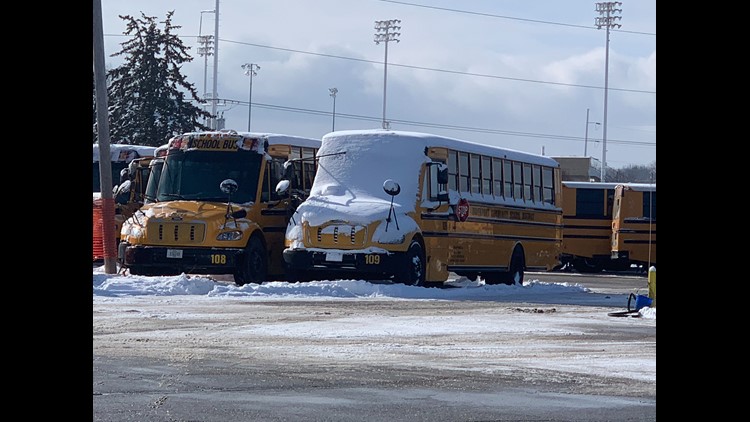(Illinois News Network) -- Schools across Illinois might not have to make up all the recent days missed due to snow and cold.
Illinois state law requires that public schools plan a 185-day calendar, with 176 days of student instruction and five days set aside for emergencies.
“Those five days are built in in case the district needs to use that emergency day, and they are, in effect, made up,” said Ralph Grimm, interim Chief Education Officer for the Illinois State Board of Education. “They’re planned for. They’re part of that 185-day total.”
Even after those five days are exhausted, school districts still have another option.
“The situation we’re in currently is many districts have already used those five emergency days,” Grimm said. “And they’re still looking at some pretty severe weather. In that case, schools may apply for what we call ‘Act of God Days.’ ”
Approved “Act of God Days” do not have to be made up. Requests are submitted first to the district’s regional superintendent, who then forwards them on to ISBE.
Grimm said they rely heavily on the recommendations of the superintendent to assess the requests. He said he couldn't recall any reports of abuse of the system.
Outside of those requirements, local districts can decide how to make up any days missed. Decisions about closures always are made at the local level because conditions are different all over the state.
“Those people on the ground in those communities are the ones who know best about weather conditions and how they’re changing,” Grimm said. “We just really strongly encourage districts to think about the safety of their students, their staff, their parents, their stakeholders in terms of getting children to school safely.”
In more rural areas of the state, country roads can be affected by blowing and drifting snow more than in urban areas. Meanwhile, Grimm said cities present a different challenge.
“In cities, what we find is street departments do a great job of clearing the streets, but the snow goes on the sidewalk, for example,” Grimm said. “Many times districts will find children standing in the street to meet the bus or walking in the street to get to school.”
Grimm says the only real guidelines from the ISBE when considering closures are to keep the safety of students and staff as the top priority.
“I was a superintendent for 21 years; I retired in June 2017,” Grimm said. “It’s been a really long time since we’ve been warned about weather like this. Wind chill and ice are two things that really keep superintendents up at night. I honestly believe if superintendents are going to make a mistake, they’re going to err on the side of the safety of the children.”



